Expert Cacti Growers Swear By These 8 Watering Tips For Happy Plants


Elizabeth is a Permaculture Garden Designer, Sustainability Consultant and Professional Writer, working as an advocate for positive change. She graduated from the University of St. Andrews with an MA in English and Philosophy and obtained a Diploma in Applied Permaculture Design from the Permaculture Association.
Reviewed By COLIN SKELLY

Colin is a Horticulturist and Horticultural Consultant with experience in a range of practical and managerial roles across heritage, commercial and public horticulture. He holds the Royal Horticultural Society’s Master of Horticulture award and has a particular interest in horticultural ecology and naturalistic planting for habitat and climate resilience.
Contributions From PETER BINT

Peter is the Society Secretary and representative of the BCSS. Peter has a massive 68 years of experience growing cacti and succulents. He has written and published academic articles about these plants, appearing in BCSS’ Cactus World, and can be found in some of the videos on the society’s YouTube account, sharing his Manchester-based collection.

Daniel is the Owner of the plant nursery Ottershaw Cacti, where he grows and sells a variety of cacti and succulents, a role he has carried out for 40 years. Daniel has won many RHS gold medals at various flower shows up and down the country and was also shortlisted for the 2022 RHS Plant of the Year at the Chelsea Flower Show.

President of the Desert Plant Society of Vancouver, Dirk has been growing cacti and succulents as a hobby since 1983. The society has been active since 1979 and Dirk has played a key role in growing and propagating cacti during this time.

With decades of experience growing cacti and succulents, David is the owner of Coach House Cacti, a specialist seller based in Dorset. He has won multiple Gold medals at various RHS Flower Shows throughout the years, with his achievements featured online. David is also a member of the British Cactus and Succulent Society.

Darren is the Plant Manager at Pugh's Cacti, a wholesale supplier of cactus and succulent plants to garden centres in the UK, based in Worcestershire.
IN THIS GUIDE
- 1) Cacti Are Adapted To Need Less Water
- 2) All Cacti Differ In Their Water Needs
- 3) Water When The Growing Medium Feels Dry
- 4) Provide Minimal Water Over Winter
- 5) Use Rainwater Where Possible
- 6) Ensure The Water Is At A Suitable Temperature
- 7) Make Sure Excess Water Can Drain Away
- 8) Never Let Water Sit At The Base Of Containers
- References
Cacti are, of course, drought-tolerant desert plants, which have minimal water requirements.
However, it is important to remember that this does not mean that they do not need any water at all.
“Cacti are a challenge because they originate from vastly different areas of the world, but you’ll soon discover they will tolerate a lot of bad habits in horticulture,” explains Peter Bint from the BCSS.
“They are very forgiving as long as ill-treatment is not too prolonged.”

Though these plants have adapted to survive for relatively long periods in very dry conditions, they do still need some water to survive.
Here are some top-level watering guidelines to help you make sure that you are caring for your cacti correctly:
- Cacti have special adaptations which reduce the amount of water they use.
- Cacti all have certain requirements, but different cacti differ in their water needs.
- Typically, water only when the surface of the growing medium feels dry to the touch from April to October.
- With most cacti, stop watering or provide only minimal water from November to March.
- Use rainwater to water cacti where possible.
- Ensure that the water is tepid and not too cold.
- Make sure excess water can always drain away freely.
- Never leave any standing water at the base of containers.
We delve into each of these in further detail below –
1) Cacti Are Adapted To Need Less Water
Mostly native to the Americas, cacti are found in arid environments.1Cacti – National Wildlife Federation. (n.d.). https://www.nwf.org/Educational-Resources/Wildlife-Guide/Plants-and-Fungi/Cacti
“Understanding the watering regime is critical for this group of plants,” says Daniel Jackson, the owner of Ottershaw Cacti.
“They are native to very dry and bright climates and this is what you are looking to replicate in the UK.”
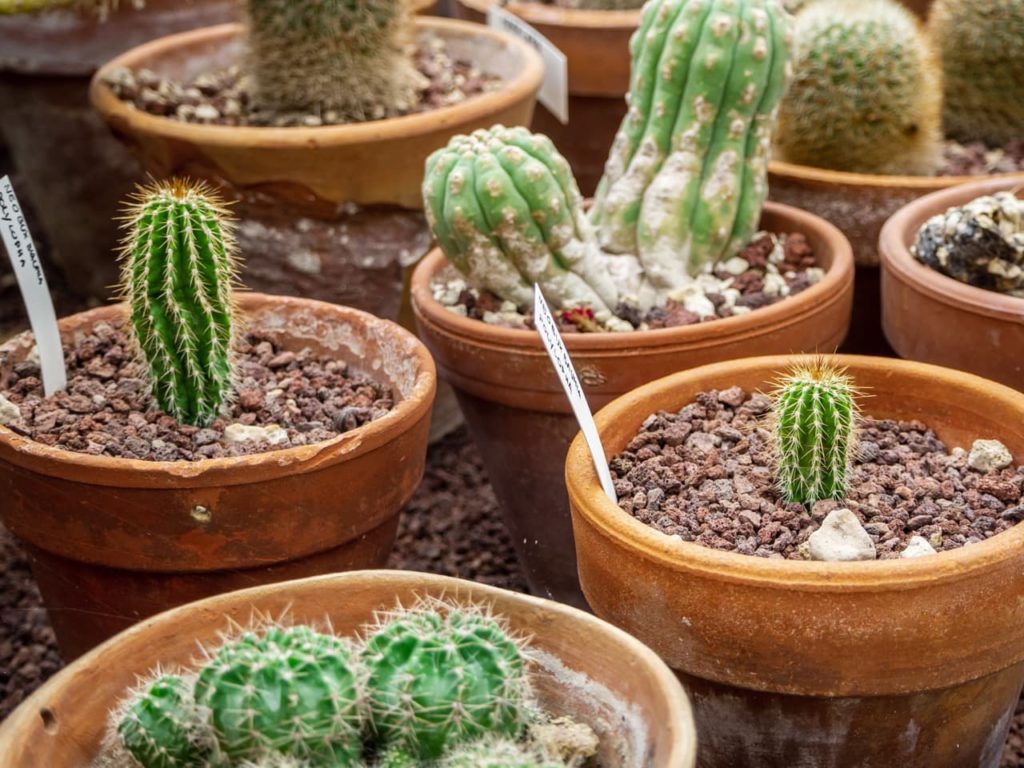
They are plants that have adapted to live in very dry locations, including some of the driest places on earth.
These plants have evolved to conserve water and survive in such challenging environments, such as the stems that have adapted to store water.
Cacti also frequently have spines rather than leaves, which help prevent water loss.
Cacti typically have short growing seasons and long periods of dormancy and are able to quickly react to any periods of rainfall and take full advantage of them.
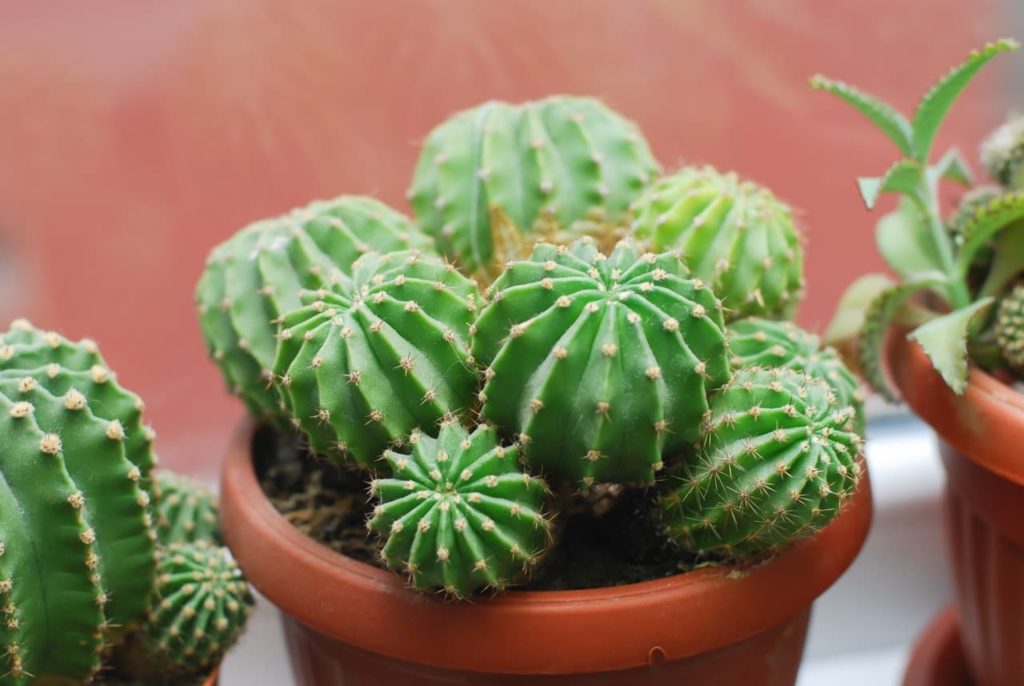
Like other succulent plants, cacti also employ the CAM mechanism as part of photosynthesis and transpire at night to reduce water loss significantly.2Rabas, A. R., & Martin, C. E. (2003). Movement of Water from Old to Young Leaves in Three Species of Succulents. Annals of Botany, 92(4), 529–536. https://doi.org/10.1093/aob/mcg171
“Most people tend to over care for cacti plants and unfortunately, overwatering them at the wrong time will cause them to rot,” says Dirk Himschoot from the Desert Plant Society of Vancouver.
“It is a good rule to let the soil completely dry out before watering again to replicate their native conditions.”
2) All Cacti Differ In Their Water Needs
“People say ‘cacti and succulents don’t need water’, but this isn’t the case, as they are living plants and need water to survive,” says Darren Evans, the Plant Manager at Pugh’s Cacti.
However, while all cacti share certain water-saving techniques and adaptations, it is important to understand that different cacti differ in their water needs.
It is important that you understand the specific environment in which the cactus you are growing would naturally be found, as this can give you clues about the plant’s water requirements.
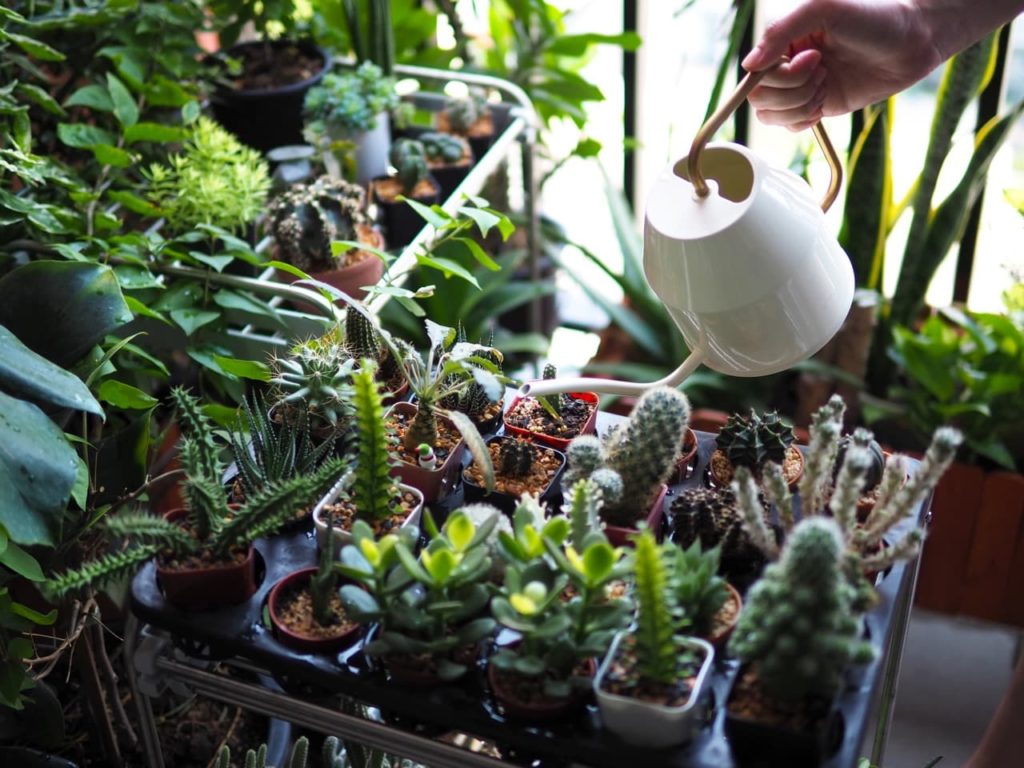
For example, does the cactus come from a true desert environment or does it come from a semi-arid environment where, while infrequent, a bit more rain does fall?
“There are many misconceptions about cacti and succulents that are held by people,” says Peter.
“They say that they grow in deserts so they don’t need water, but this isn’t true at all.
“Cacti grow in semi-desert and even more lush places and need regular water when in growth, but the soil should be mildly moist and able to dry out between waterings.”
3) Water When The Growing Medium Feels Dry
Though cacti can differ somewhat in their watering needs throughout the year, many cacti that are commonly grown as houseplants or which are placed outdoors in British gardens in summer, are going to need more water between April and October while they are in active growth.
“When watering, drench the cacti so the compost is completely wet, then drain any retained water in a saucer or plant pot, and finally let your succulent dry right out,” says Daniel.
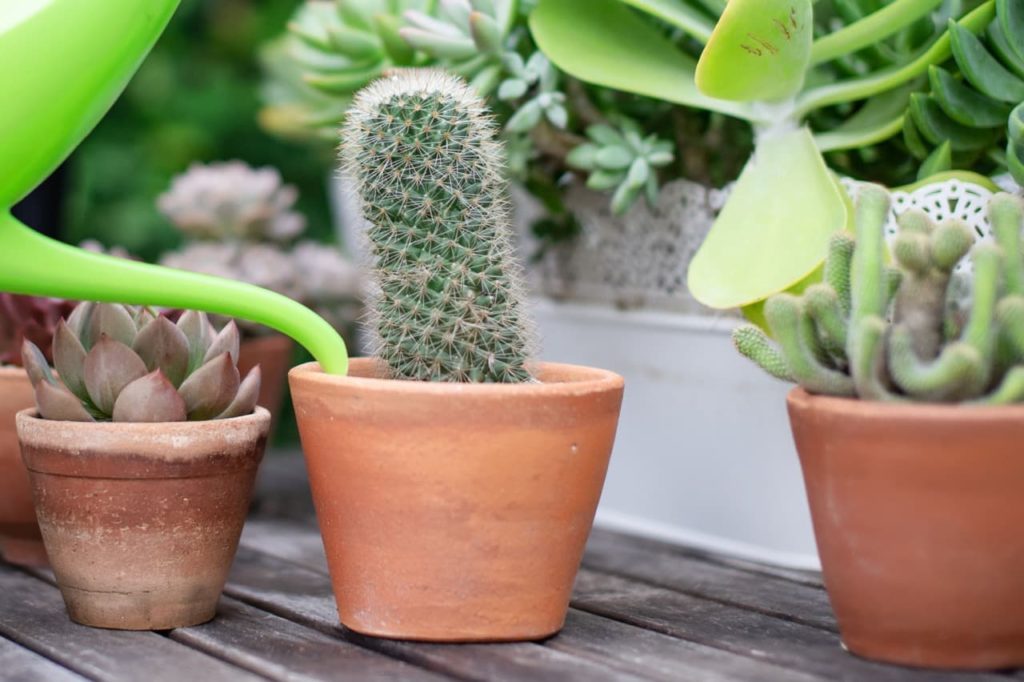
“This may take 10-14 days depending on where you have put it.
“Remember, a hot bright spot will dry out quicker than a cool dull location.”
However, always check the growing medium with a finger before watering any cacti, even during this time, as their water use will obviously differ depending on the light levels and temperatures to which they are exposed.
You should aim to water from April to October whenever the surface of the growing medium feels dry.
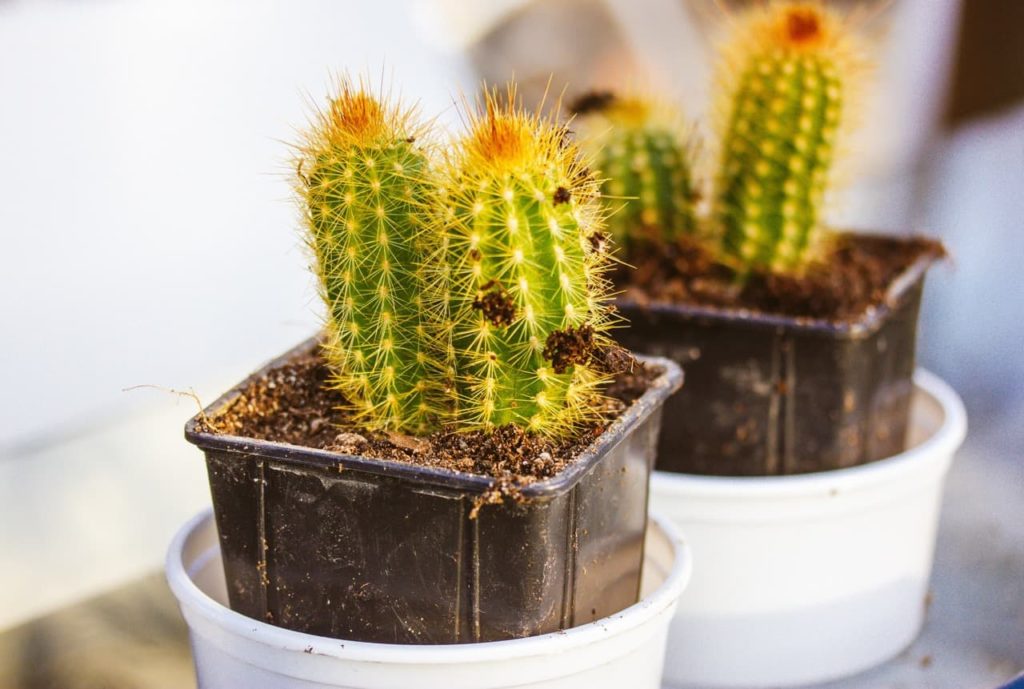
You do not want the growing medium to dry out excessively during this time but neither do you want to create excessively moist conditions.
“It is better to stand the pots in water and allow the soil to absorb moisture,” advises Peter.
“Watering from overhead does not moisten the middle of the potting mix so root growth could become uneven.”
4) Provide Minimal Water Over Winter
Most cacti will enter a period of dormancy over the winter months and should be allowed to rest during this time.
“To prevent the loss of your cactus, stop watering in the colder months to allow the cactus to go dormant,” says Darren.
This means ceasing watering altogether or only providing minimal watering during this period, which is typically between November and March, as Peter shares:
“There are hardly any cacti that need water between mid-October and mid-March.
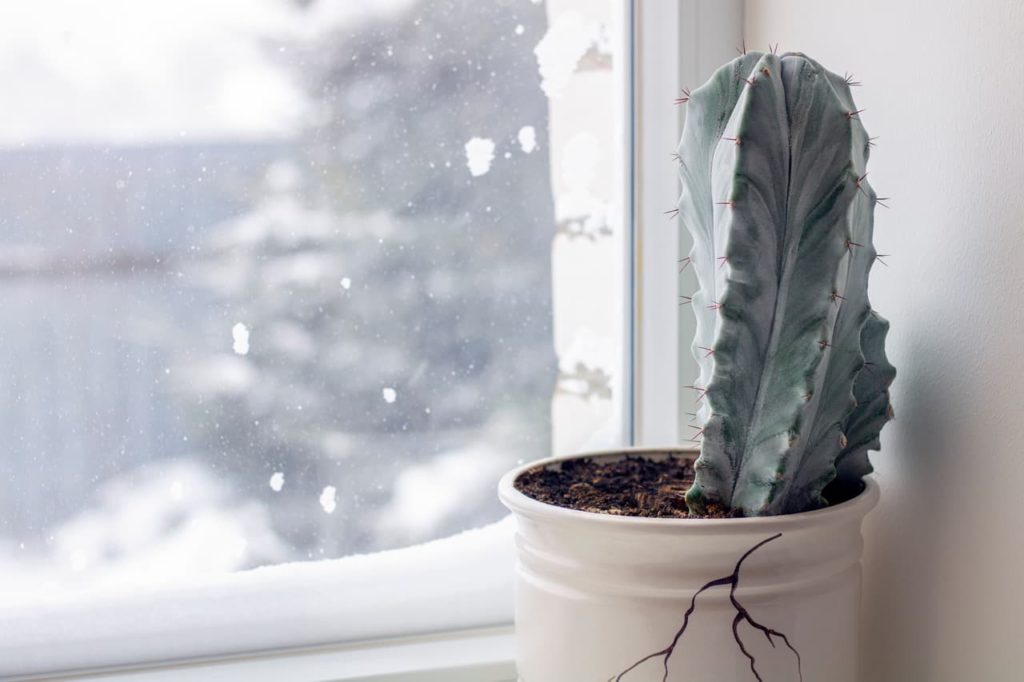
“If they look a little shrivelled in December, January or February, then a small amount of water can be applied; just enough to dampen the lower soil in the pot which will feed the roots and prevent them from dying which is important.”
Allowing the cacti to have this period of rest should promote flowering.
However, there are exceptions to this.
Orchid cacti should still be watered when the medium is dry through the coldest months and winter-flowering cacti, such as the Christmas cactus, should be watered regularly in winter and given their rest period in the summer months.
“Don’t water your cacti the same as you would other houseplants,” warns Colin Skelly, a Horticultural Consultant.
“Keep an eye on the soil moisture; if it is moist to touch in the first 2-3cm, then don’t water. This is especially true in winter when active growth will be less and root rot is most likely.”
5) Use Rainwater Where Possible
The water you use to water your cacti can be just as important as how much water you provide and how frequently.
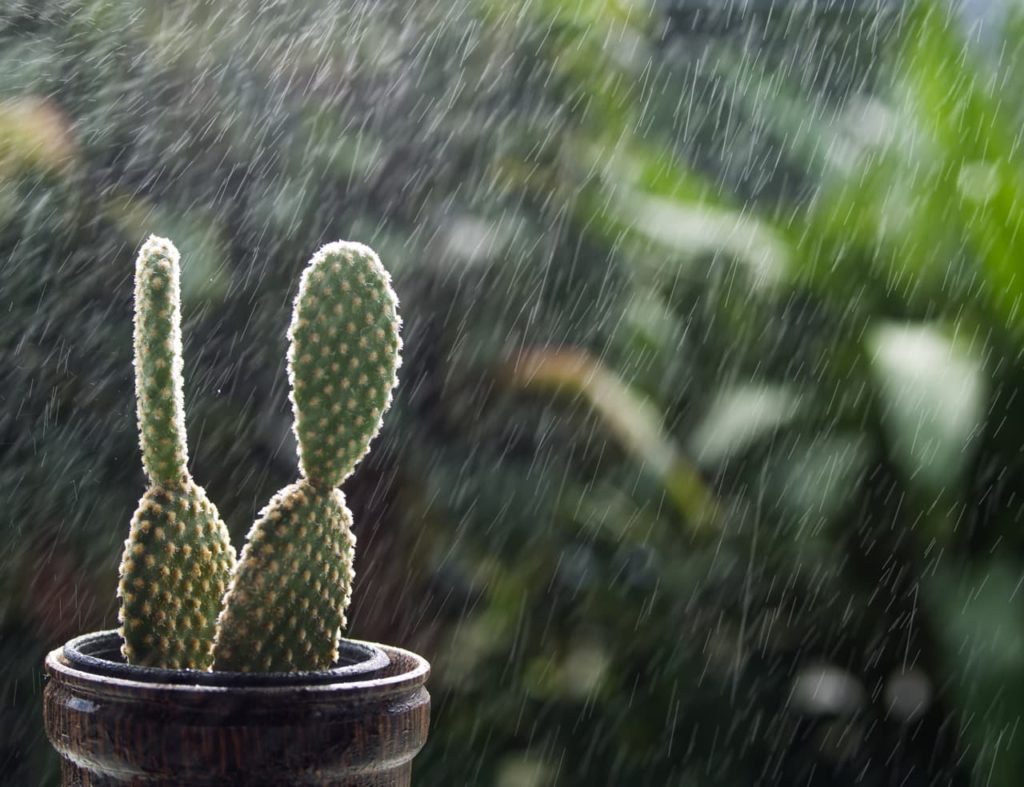
Unfortunately, tap water can cause the build-up of mineral salts that can be detrimental to the plants, so, where possible, it is always best to use rainwater to water your plants.
6) Ensure The Water Is At A Suitable Temperature
Whether you can use rainwater or not, another thing to think about when growing cacti is that they can be sensitive if the water used is too hot or too cold.
The water should be tepid before it is used in order to avoid any ill effects.
7) Make Sure Excess Water Can Drain Away
Cacti, of course, require free-draining conditions and you should have kept this in mind when choosing your containers and potting mix.
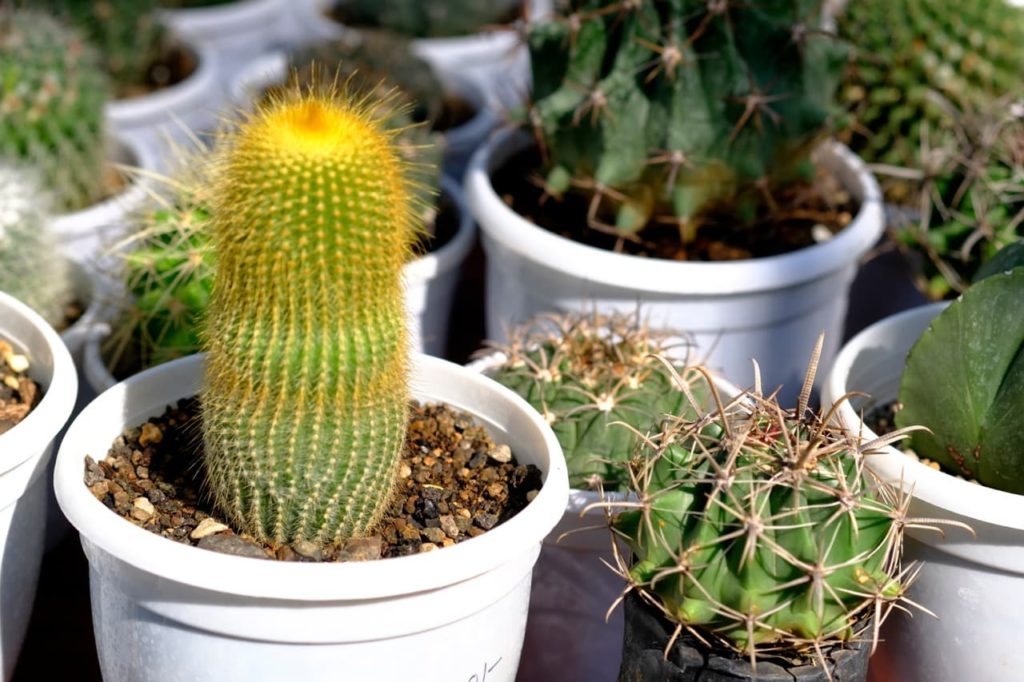
“Cacti should be grown in free-draining compost, as this would be their natural substrate,” says David Ennals from Coach House Cacti.
Always make sure that the pot and the medium allow for good drainage and that excess water can always drain away freely.
Waterlogging should never occur.
8) Never Let Water Sit At The Base Of Containers
“Never leave your plant standing in water; drain it off and replace it on its saucer after watering,” says David.
Check the saucer or tray below your pots when growing cacti.
After watering, make sure that any excess water that has ended up at the base of containers is tipped away and not left in place as standing water can cause problems with waterlogging and raise humidity levels detrimentally.
“One of the most common problems I see is people not letting their cacti dry right out before watering again,” says Daniel.
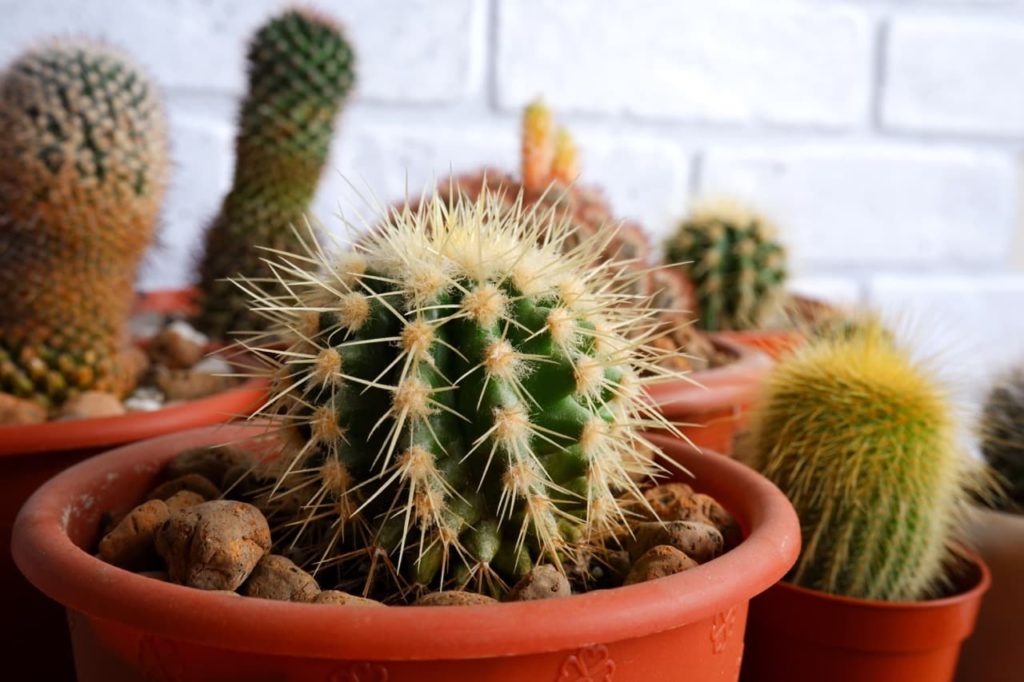
“It is counterintuitive to many people to keep the plant so dry, but if their roots sit wet for too long, they simply rot and the plant is likely to die.
“The defining characteristic of a succulent is that it stores water and its roots want to sit dry.”
Remember, when it comes to watering cacti, less is often more.
Killing it with kindness is one of the biggest problems when it comes to watering cacti kept as houseplants in a home.
So, water only when the medium is in danger of entirely drying out.
References
- 1Cacti – National Wildlife Federation. (n.d.). https://www.nwf.org/Educational-Resources/Wildlife-Guide/Plants-and-Fungi/Cacti
- 2Rabas, A. R., & Martin, C. E. (2003). Movement of Water from Old to Young Leaves in Three Species of Succulents. Annals of Botany, 92(4), 529–536. https://doi.org/10.1093/aob/mcg171
